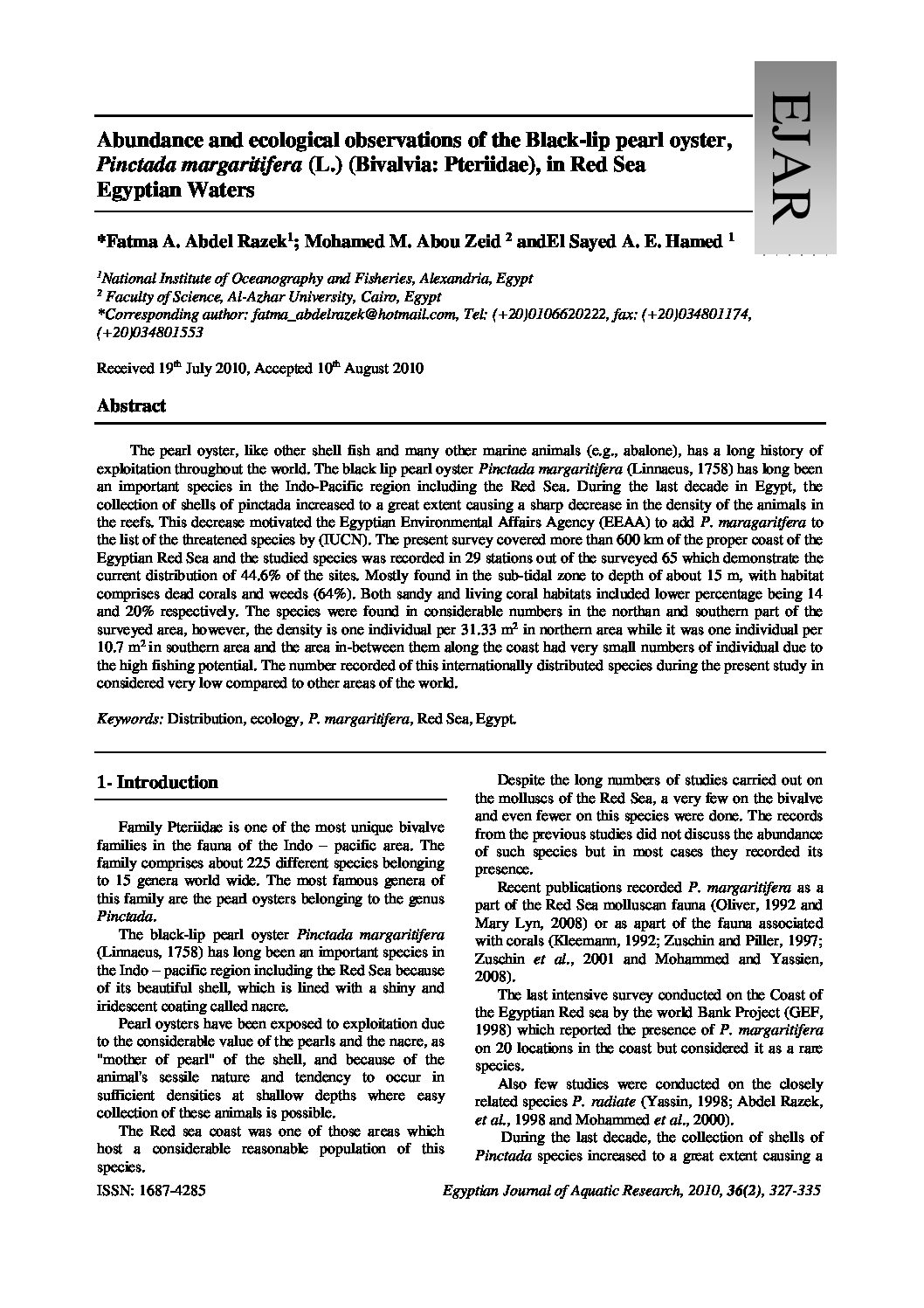Categories
vol-36Developmental toxicity of nonylphenol in zebrafish
(Danio rerio) embryos
Tamer El-Sayed Ali
Oceanography Department, Faculty of Science, Alexandria University, Egypt.
E-mail: [email protected]
Received 5th June 2010, Accepted 27th July 2010
Abstract
Nonylphenol (NP) is a widely used industrial organic compound that enters the environment as a microbial
degradation product of nonylphenol polyethoxylates (NPEs), being ubiquitous environmental contaminant
especially in aquatic ecosystems. Evidence of the severe effects of NPs on different fish species exists in a number
of axes including endocrine and non-endocrine as well. In this study, we report the effect of NP on zebrafish (Danio
rerio) embryogenesis. Fish eggs (1 hour post fertilization, hpf) were exposed to graded concentrations of NP (0.01,
0.03, 0.1, 0.3, 1, 3 and 10 μM), ranging from high lethal levels to lower, more environmentally relevant levels. The
embryos/larvae were checked at 24, 48 and 72 hpf to study the development and survival calculation. Images were
depicted at all treatment levels to complete the picture of the morphological abnormalities in different organs.
Embryogenesis was highly affected by NP in a dose-dependent pattern. Through a comparative approach of the
treated embryos with the control group, it could be revealed that 0.01, 0.03, 0.1 and 0.3 μM have no side effect on
the embryos, meanwhile 1 and 3 μM caused severe oedema and less development 24 hpf, but 10 μM is lethal from
the beginning. The results of the current study show that more attention should be given to assess the risk of these
compounds in the aquatic environment.
Keywords: Nonylphenol, Zebrafish, Toxicity, Embryogenesis, Developmental abnormalities.







